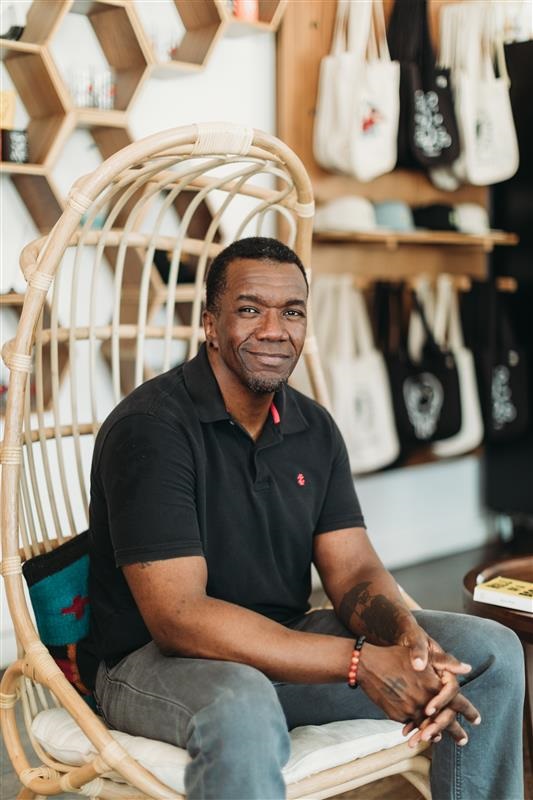On their 2004 album, Feels, but more so on their ‘07 top-200-chart-cracking release, Strawberry Jam, the band demonstrated in moments of various length the full realization of their potential as song makers. During songs like Feels’ “Banshee Beat,” “Grass,” and “#1” and Strawberry Jam’s “Fireworks” and “For Reverend Green,” the band methodically moves along, coherently developing the tracks, adding and manipulating seemingly disparate sounds together to great effect. In these songs and in others like them, there is a sense of freedom that you won’t find in tunes that deploy a more traditional sound structure.
In a typical song, the music remains pretty much the same—the chords progress and the keys will change, but the instruments and their tone and timber largely remain fixed. In this type of arrangement, it is easy to detect adjustments in the chorus, lyrics, and obviously the music itself that all, ultimately, point to the song’s inevitable climb to its climax and conclusion. If you listen though to a typical Animal Collective song, “Fireworks,” for example, you will hear a gyrating evolution of layers, a drum snare phrase, narrative-less lyrics available for multiple interpretations, segments of keyboard lines, rhythmic chants, bleeps and other electronically produced audio fragments, vocal woops, DJ-style vinyl scratches, hi-hats, organ notes, unsourcable percussion, what might be a duck call, piano, industrial drum noise—all of this added on and taken away throughout the song, sometimes gradually brought in, at other times abruptly dropped out. In this process of balancing the algebraic auditory equation, the nature of the sound landscape in Fireworks as well as many songs similar to it is changed a minimum of at least a few times, but usually many more. The end result is a song quite unlike any other traditional pop tune. It is a song made up of layers morphed together to create a moment of music that is far more than the sum of its parts.
 Nearing 11 pm, for those of us on the ground level, the band was still managing to capture our attention. This was remarkable because they weren’t actually doing anything. Their lack of movement and dedication was trance-inducing and, with the background being a constant wobble of visual stimuli, their foreground restraint was all the more alluring. It occurred to me that the purpose of the band’s non-performance was possibly an act of encouragement. They hoped, I think, that the audience might mimic their self-restraint and begin to look around like them, with slow gazes and light movement, submitting to a form of open-eyed meditation. I realized that the band was maybe hiding behind the costumes because they wanted to remove the idea of the band all together, negating the standard relationship between them and the audience. I was compelled to tell this to someone but Friend was occupied and the crowd around me was mostly seated or supine, staring up and into the projections above. It seemed that many had taken the cue it took me hours to pick up on. The ground level was much more charged with energy but I wanted to get a better view of the up and down and headed for a middle level edge.
Nearing 11 pm, for those of us on the ground level, the band was still managing to capture our attention. This was remarkable because they weren’t actually doing anything. Their lack of movement and dedication was trance-inducing and, with the background being a constant wobble of visual stimuli, their foreground restraint was all the more alluring. It occurred to me that the purpose of the band’s non-performance was possibly an act of encouragement. They hoped, I think, that the audience might mimic their self-restraint and begin to look around like them, with slow gazes and light movement, submitting to a form of open-eyed meditation. I realized that the band was maybe hiding behind the costumes because they wanted to remove the idea of the band all together, negating the standard relationship between them and the audience. I was compelled to tell this to someone but Friend was occupied and the crowd around me was mostly seated or supine, staring up and into the projections above. It seemed that many had taken the cue it took me hours to pick up on. The ground level was much more charged with energy but I wanted to get a better view of the up and down and headed for a middle level edge.
In most of Animal Collective’s work, it’s hard to manage the same kind of self-orientation you can get while listening to a song like “The Only Living Boy in NY.” In TOLBiNY, the ending is signaled pretty much from the slow and building beginning. In something like Animal Collective’s “Fireworks,” the ending doesn’t reveal itself till after the song is over because the whole song itself is in a constant state of flux, not steadily accelerating towards anything, let alone its own climax and release. When the band is at its best, as they are on songs like “Fireworks,” they are music makers offering an invitation to the listener to travel beside highly stimulating sounds that reward anyone willing to listen closely and be content with the journey itself instead of the inevitable end.
I found an opening at the third rotunda level and noticed that the projections were finally filling up the whole space. At times, they weren’t bright enough, but by 11 pm, they’d come into their own. The music, too, seemed to settle in on a pulse of some sort, but the tracks were still elusively short. In an email interview after the show, Stephen Moore explained to me the band’s design for the presentation of the event’s music. The band had given Stephen about 100 song files to work with, some simple drones and rhythms, others that were multi-track pieces similar in construction to actual songs. The files were varied—some with “roaring bass,” others that were “intense, crackling high frequencies [that] pulled your eye to follow them along the walls as they moved.” The band wanted the software to decide which sounds were played, how much or how little of the files were played, which sounds played together, layered upon one another, how smoothly or abruptly the sounds transitioned into each other, and, most interestingly, how the sounds moved through out the 36-speakers. At times, the sounds were deployed to spiral up the speakers attached to the corkscrew rotunda, while at others, the sounds climbed up and down or in and out of random speaker locations. Certain sounds were meant to recur throughout the night; others were heard once and never played again.
Before the band released Merriwether Post Pavilion in 2009, the group’s most recent and widely bought, reviewed and appreciated album, there was Panda Bear’s 2007 solo LP, Person Pitch, the most important album to modern music since Radiohead’s Kid A. The album was a radical evolution for Panda Bear, the stage name of Noah Lennox, a founding member of the four-person band. Over seven songs that span 45 minutes, the record is a glowing demonstration of how liberating well-crafted layer music can be. Without the restriction of typical structure, you can loose yourself in the undulating morph of Panda Bear’s sound layers because there are no markers of the song’s inevitable end to be concerned with. More importantly, however, is the album’s powerful presentation of audio white space.

In a good deal of Animal Collective music prior to Person Pitch, both in the group and solo efforts, the songs tend to follow a curious formula. Like Ptolemy’s earth-centered epicycle theory of the layout of the universe, where the planets all orbit about in their own mini loops while orbiting as well on their own larger loops around the earth, the common sound structure for pre-Person Pitch Animal Collective is a track that consists of sound layers colliding with their own progress forward, moving ahead and crashing back while undulating, like the large planet orbits, in a loop-de-loop momentum towards no apparent end. The fact that the songs don’t move along to a final ending is fine—this is one of the band’s strengths throughout their career—the problem here though is that the layers rarely get a chance to breathe. It is a kind of music that is perpetually colliding within itself and the net effect ends up being a young catalog of music that can come across as too heavy, too dense, and excessively recursive. This is, of course, not strictly the case for all of the band’s early works, but the formula reins as an all too often frequent occurrence. The change to a more approachable and even sound is most prominent in the band’s work after Person Pitch. It was with this album that Panda Bear, like Copernicus, smoothed out the long admired stuffy and elaborate formula into something much more refined, elegant and enjoyable to hear.
About 15 minutes after 11 pm, the crowd had thinned to a quarter of its size. I checked in briefly with Friend and couldn’t tell if he needed to be saved from a horrible conversation or left alone. I assumed the latter and returned to my spot perpendicular to the band three levels below. Patterns had emerged in the sound, some fragments reoccurred at least a few times in the last hour and the low throb of the bass-heavy music began to resemble the ends and beginnings of recent Animal Collective songs. The transitions were occasionally jarring but they started, even in their abruptness, to placate my want for typical song structure.
In the reviews that came out the day after the show, many reviewers were unhappy with what I thought was the event’s obvious intention. In fact, some of the reviewers dismissed the terms of the performance completely. For New York Magazine, Nick Catucci summarized the show as a fine opportunity for one to flirt with his or her neighbor and “indulge their animal instincts.” In a blog post for Vanity Fair, Bill Bradley “[clamored] for Animal Collective to come out and tear the roof off the place.” Simon Vozick-Levinson seemed to comprehend the event for what it was but admitted on Entertainment Weekly’s website that an “actual Animal Collective concert” would have been “more fun.”
By midnight, only about 300 of the original 1500 people remained and the music began to wind down. The lights appeared binary in movement, staying with a purple and orangey red leaf foliage pattern as the house lights faded in. The music stopped and assistants tapped the band members on their legs to inform them that their shifts were over. Removing their masks to huge applause, the members revealed themselves to be Geologist, Deakin and Avery Tare. Panda Bear was absent but I had to wonder if he contributed to the space-structure of the speakers and sound. Friend reappears at my side, alone. To growing applause, the three band members eased down to the ground level and wobbled out of sight. The assistants followed, holding the white masks over their heads like artifacts destined for display behind glass. Friend and I finished our drinks and grabbed our coats before heading out into the chilly noise of New York City midtown.
***
Rumpus original art by André Eamiello.
Creative commons licensed photos by xbettyx.
For more photos from the night, click here.




7 responses
I think Frank Gehry designed the Guggenheim.
Hi Emily,
It was Frank Lloyd Wright:
http://www.guggenheim.org/guggenheim-foundation/architecture/new-york
Sean,
Great review man. You captured the moment alright.
Gehry designed the Guggenheim Museum Bilbao.
great review.
I like the way you capture the details in the review. That friend sounds like a total jerk. I would have kicked his over the railing.
I should say that Friend is actually a good guy, despite how I depict him in this piece. I think he was slightly distracted by the many attractive distractions that night.
Click here to subscribe today and leave your comment.